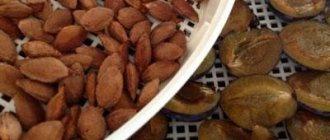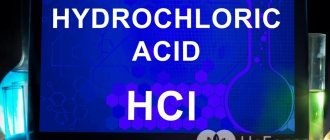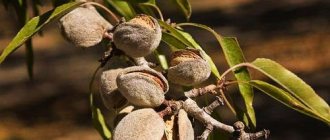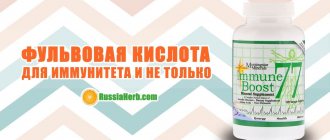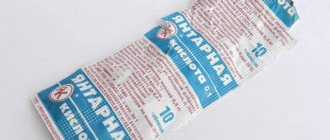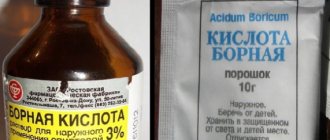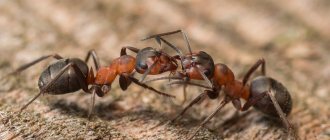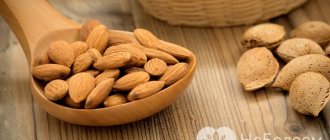The combination of carbon with nitrogen forms cyanogen. It is a colorless gas with an almond odor. It is mainly used for organic synthesis and welding of metals. The gas is explosive and flammable. At the same time, it is poisonous, but not as much as hydrocyanic acid.
They have one thing in common. Hydrocyanic acid and its salt, cyanide, also smell like bitter almonds. The odor of hydrocyanic acid is weaker than that of cyanide, but is still quite noticeable.
Hydrocyanic acid
Hydrocyanic acid is a potent poison that causes serious poisoning and death. It is a colorless liquid that easily turns into a gas. Has a characteristic almond smell. The lethal dose for the body is 50 mg, subcutaneously - 1 mg per kg of weight. In past centuries, this poison was used against high-ranking and inconvenient persons.
The odors of bitter almonds are characteristic of hydrocyanic acid salts - cyanide. The popularity of the toxic substance is due to the ease of its production, reliability and speed of action in any state of aggregation.
Interesting!
Few people know what poison almonds smell like, since only 60% of the population - carriers of a certain gene allele - can smell this smell.
Once in the body, the colorless liquid with the smell of bitter almonds blocks enzyme activity, which leads to a sharp decrease in oxygen levels in tissues (hypoxia). As a result, the cardiovascular and main parts of the nervous system are destroyed. Corresponding changes are observed in the blood and respiratory functions. From an overdose of potassium cyanide (potassium salt of hydrocyanic acid), a person dies within 3-5 minutes.
In addition to almonds, hydrocyanic acid with its characteristic almond smell is also found in other fruit seeds of the plum genus:
- peach;
- apricot;
- cherry;
- cherries;
- bird cherry.
Hydrogen cyanide is a natural insecticide. As long as the bitter almond seed is in the shell, this poison is not dangerous. But as soon as the integrity of the nucleus is disrupted, chemical processes are activated. Thanks to which the toxic compound is released.
In peeled nuts, the specific gravity of amygdalin, the main participant in the release of the toxin, is 2.5-3%. The lethal dose is contained in:
- 40 bitter almonds - 2.5–3%;
- 50 peach pits - 2–3%;
- 50 cherries or cherry pits - 0.8%;
- 100 apricot kernels - 1–1.8%;
- 200 apple seeds - 0.6%.
Interesting!
In Ancient Egypt, cyanide was extracted from peaches. The almond-flavored poisonous substance was even named after the hairy fruit. This became known after experts were able to decipher the hieroglyphs - “punishment with a peach.”
The smell of death
Hydrocyanic acid is a volatile, colorless liquid. A certain percentage of it is contained in wild bitter almonds. In order to become poisoned, it is enough to put only 40-60 grains in your mouth.
The lethal dose of the substance is 50 mg per adult or 1 mg/kg if administered subcutaneously.
Many people have heard about potassium cyanide. One of the most famous and widespread poisons of past centuries, which was often used to eliminate unwanted and high-ranking personalities. It is this component that is contained in the already mentioned acid. And if someone asks what poison almonds smell like, then the answer is already known.
The reason for the popularity of cyanide was obvious: easy to manufacture, trouble-free action and effectiveness in any state of aggregation. And it could be found not only in almond seeds, but also in the seeds of fruits belonging to the plum genus:
In nature, everything is logically justified. Plants need hydrocyanic acid, which contains a poison that repels insects that can damage the grain and prevent it from germinating. They smell a characteristic smell and try to stay away from it.
For example, in Ancient Egypt they practiced extracting poison from peach. That's what they called him - "peach". This was found out after deciphering the hieroglyphs, where the expression “on pain of peach poisoning” was mentioned.
So the history of poison with the smell of almonds comes from very ancient times.
Where are cyanides found?
To avoid cyanide poisoning, which smells like almonds, you need to know where it is hiding. Some plants are carriers of poison. A toxic substance with the smell of almonds can be found in tobacco smoke, during the coking of coal, and the burning of nylon and polyurethane. There is a high risk of poisoning from the pores of the poison in the production of precious metals, for the purification of which hydrocyanic acid is used.
Hydrogen cyanide vapors, which have an almond-like odor, are rarely encountered in everyday life. The main danger lies in products with a high concentration of this substance in their composition.
Reference!
Hydrocyanic acid in almond seeds performs a protective function: it repels insects that can damage the seed.
Hydrogen cyanide salts, which smell like almonds, are necessary when extracting precious metals from mined ores. They are used in a method called cyanidation - the selective dissolution of metals. And also for:
- galvanic gilding and silvering of base alloys;
- chemical separation of metal alloys;
- other activities in the chemical industry.
Previously, potassium cyanide was used in the fight against rodents, in the manufacture of mouse poison. During World War II, the poisonous substance was used as a weapon of war.
Beneficial properties of almonds
Almonds are rightfully considered a symbol of happiness and prosperity, especially if you remember that the main treasure of a person is health. Due to their composition, different varieties of almonds are used in the food industry, cosmetology and pharmaceuticals.
Almonds are prescribed for vitamin deficiency; they contain little cholesterol, activate metabolism, and help remove toxins from the body. Nuts have a beneficial effect on the digestive system. It is believed that almond kernels increase potency, promote hematopoiesis, and help remove sand from the kidneys.
The nut enriches the body with vitamins A, C, E, PP, B vitamins, contains various macro- and microelements, including Ca, P, Mg, K, Cu, Na, Zn, Mg, Mn, Se, monosaccharides, fiber and various enzymes. also contain hydrocyanic acid , which is produced from amygdalin - and this is where the danger lies.
Poison content in everyday life
Hydrogen cyanide can be hidden in unexpected places and products to which people are most vulnerable. For example, you need to be extremely careful when offering plastic dishes to children and people with allergies. Before pouring water or putting in food, you should make sure that it does not emit an almond smell.
Poor quality plastic that has been manufactured inappropriately may contain a toxic substance that is released in large quantities, especially when heated. It is for this reason that plastic utensils are marked “do not use for hot dishes.” Ignoring these rules can lead to the release of toxic fumes and, as a result, poisoning.
Harmless cups and plastic bottles can undermine your health. Such items are especially dangerous for children whose stomachs have low acidity. They are more susceptible to negative influences than others. To avoid dangerous consequences, you should use glassware or special and safe plastic based on environmentally friendly materials.
First aid to the victim
If there are signs of damage from hydrocyanic acid, you must immediately call an ambulance. Before her arrival, the victim must be given first aid.
- First of all, you need to save the victim from contact with the poison. The person should be immediately removed from the room in which there are toxic fumes. Clothes and shoes must be removed, as they can absorb poison.
- In case of poisoning with products containing hydrocyanic acid, it is necessary to cleanse the body before the doctor arrives. The victim is given a lot of liquid to drink (a solution of potassium permanganate is good) and is induced to vomit. To induce a gag reflex, press on the root of the tongue. In unconscious patients, inducing vomiting is strictly prohibited, because they may die by choking.
- To cleanse the intestines, the poisoned person is given a laxative and activated charcoal. It is better to use a saline laxative.
- If the victim has lost consciousness, he is placed on his side so that he does not choke when vomiting. In this case, the head should not lie on the pillow.
- If necessary, perform indirect cardiac massage. Artificial respiration cannot be done using the “mouth to mouth” or “mouth to nose” method, otherwise the rescuer risks poisoning. It must be remembered that cardiac massage can only be done if you have knowledge and experience. Otherwise, you can harm a person.
Hydrocyanic acid poisoning
Cyanides cause tissue-type oxygen deficiency. As a result of poisoning, the following symptoms occur:
- headache;
- dizziness;
- metallic taste in the mouth;
- nausea and vomiting;
- shortness of breath;
- convulsions;
- stomach pain;
- pain in the heart area.
After an increase in heart rate, increasing signs of suffocation and convulsions, a sharp decrease in pulse, fainting, coma, and, in case of serious poisoning, death occurs. If critical doses of a toxic substance enter the body, symptoms develop instantly. If you don't give a poisoned person an antidote, he will die.
Poison with the smell of bitter almonds has such antidotes as:
- amyl nitrite;
- methylene blue;
- sodium nitrite;
- chromosmon;
- sodium thiosulfate.
The latter converts cyanides into thiocyanates - harmless salts.
Reference!
If the poisoning is not significant, then regular sugar is suitable as an antidote. It is advisable to drink sugary drinks in large quantities so that the negative symptoms quickly disappear.
Methemoglobin formers are the most effective antidotes; they quickly bind toxic substances in the blood, forming cyanmethemoglobin. They are used as part of complex treatment along with other antidotes. At the same time, they are extremely dangerous because they can completely interrupt the process of oxygen saturation of the blood. The attending physician must decide whether to take an antidote, monitor it, and prescribe doses.
The benefits outweigh the risks
The tiny amount of cyanide in the sweet nut should not fool you into including these nutritious kernels in your diet. Almonds improve brain function and are high in monounsaturated fat, which is good for the heart and helps lower blood cholesterol. For heart health, it is recommended to eat 30 - 40 g per day (25-30 pieces). The nutrients in the nut also help control blood sugar levels and reduce inflammation.
p, blockquote 14,0,0,0,0 —>
It's best to soak nuts in water for 12-24 hours to increase their nutrient content and remove natural inhibitors that block digestion. By soaking almonds, you will absorb more of their vitamins and minerals and less of their tannins and acids.
p, blockquote 15,0,0,0,0 —> p, blockquote 16,0,0,0,1 —>
Soaking method:
- Place the kernels in a bowl.
- Add drinking water until the nuts are completely submerged.
- Do not close the lid; you can cover it with gauze or a rag so that oxygen remains available.
- Leave overnight at room temperature.
- In the morning, drain the water and eat.
after —>
The combination of carbon with nitrogen forms cyanogen. It is a colorless gas with an almond odor. It is mainly used for organic synthesis and welding of metals. The gas is explosive and flammable. At the same time, it is poisonous, but not as much as hydrocyanic acid.
They have one thing in common. Hydrocyanic acid and its salt, cyanide, also smell like bitter almonds. The odor of hydrocyanic acid is weaker than that of cyanide, but is still quite noticeable.
How to eat almonds correctly
Almonds and other seeds with a toxic substance (apricot, cherry, etc.) must first be dried in the sun. Under the influence of rays, the dangerous compound is neutralized, which allows you to consume nuts and grains in the future without fear for your health and life.
If you exclude exposure to sunlight, then you can process the products in another way - fry the almonds by placing the grains in a preheated oven. When exposed to heat for a long time, hydrogen cyanide molecules break down and evaporate.
Raw fruits and nuts, just peeled, are extremely dangerous for the human body. 40 bitter almond kernels eaten can lead to severe poisoning with further hospitalization. Nuts containing hydrogen cyanide have not only a characteristic odor, but also a specific taste, which softens after roasting and drying.
Almonds, cherries and other stone fruits are safer to eat in the form of compote. When boiled, the dangerous substances will evaporate, which cannot be said about tinctures, where the poison retains its negative effect.
Precautionary measures
To avoid hydrocyanic acid poisoning, the following precautions must be taken:
- comply with safety rules at the enterprise;
- in workshops, work exclusively in special clothing and protect the respiratory system. After finishing work, be sure to change clothes;
- do not consume unlimited quantities of fruit seeds containing hydrocyanic acid (apple, cherry, apricot, bitter almond);
- do not drink wine made from fruits with seeds;
- When cooking compotes for future use, remove the seeds from the fruit.
Summing up
The smell of bitter almonds carries a mortal danger. However, it is inherent only in small doses of hydrocyanic acid in the product. A high concentration of the substance emits a completely different, unpleasant aroma.
Hydrocyanic acid in favorite delicacies, when consumed correctly, is absolutely harmless. Small doses of cyanide in cooked foods are not dangerous because they are neutralized in the body, which contains glucose in the blood. Sugars present in human blood act as a natural antidote. All that is required of a person is not to exceed their maximum permissible concentration.
Potassium cyanide
Hydrocyanic acid is a toxic substance, the lethal dose to the body is 50 mg, subcutaneously - 1 mg/kg.
Everyone has heard about the most popular poison of past centuries, which was used to poison famous and inconvenient people. We are, of course, talking about potassium cyanide. Cyanide, a component of hydrocyanic acid, is the source that gives the characteristic almond odor. The popularity of this poison was associated, first of all, with the ease of its production, reliability and speed of its action in any of the states of aggregation. However, not all people can smell this smell, but approximately 40% of the population, owners of a certain gene allele.
In addition to almonds, hydrocyanic acid (as hydrocyanic acid is called) is also found in other fruit seeds belonging to the plum genus, which contain a toxic substance with the smell of bitter almonds:
Biological role
It has been shown that neurons are capable of producing endogenous hydrocyanic acid (hydrogen cyanide, HCN) after their activation by endogenous or exogenous opioids and that the production of endogenous hydrocyanic acid by neurons increases the activity of NMDA receptors and thus may play an important role in signal transmission between neurons (neurotransmission). ). Moreover, the formation of endogenous cyanide was found to be necessary for the full analgesic effect of endogenous and exogenous opioids to occur, and substances that reduce the formation of free HCN were able to reduce (but not completely eliminate) the analgesic effect of endogenous and exogenous opioids. It has been suggested that endogenous hydrocyanic acid may be a neuromodulator[7].
It is also known that stimulation of muscarinic cholinergic receptors of pheochromocytoma cells in culture increases their production of endogenous hydrocyanic acid, but stimulation of muscarinic cholinergic receptors of the central nervous system in a living rat leads, on the contrary, to a decrease in the formation of endogenous hydrocyanic acid [8].
It has also been shown that hydrocyanic acid is secreted by leukocytes during the process of phagocytosis and is capable of killing pathogenic microorganisms [7].
It is possible that the vasodilation caused by sodium nitroprusside is associated not only with the formation of nitric oxide (a mechanism common to the action of all vasodilators of the nitrate group, such as nitroglycerin, nitrosorbide), but also with the formation of cyanide. It is possible that endogenous cyanide and thiocyanate formed during its neutralization in the body play a role in regulating the functions of the cardiovascular system, ensuring vasodilation and are one of the endogenous antihypertensive substances [9].
Receipt
Currently, there are three most common methods for producing hydrocyanic acid on an industrial scale:
- Andrusov method: direct synthesis from ammonia and methane in the presence of air and a platinum catalyst at high temperature:
- method (Blausäure aus Methan und Ammoniak)
, patented by Degussa: direct synthesis from ammonia and methane in the presence of a platinum catalyst at high temperature:
- A by-product of the production of acrylonitrile by oxidative ammonolysis of propylene.
Occupational Safety and Health
The maximum permissible concentration [14] in the air of the working area is 0.3 mg/m3 (maximum one-time). According to data[15], at dangerous concentrations, people most likely will not feel the odor; and according to [16], the odor perception threshold can be 5.6 mg/m3. Therefore, the use of widely used filtering RPE in combination with “replacing filters when an odor appears under the mask” (as is almost always recommended in the Russian Federation by RPE suppliers) will lead to excessive exposure to hydrocyanic acid on at least some workers - due to the delayed replacement of gas masks filters. To protect against this substance, significantly more effective changes in technology and collective protective equipment should be used.
Antidotes
Among the main antidotes of hydrocyanic acid, which provide the most pronounced resistance to the toxic substance, the following drugs can be distinguished:
- Sodium thiosulfate;
- Glucose;
- Chromosmon;
- Ethyl nitrate;
- Amyl nitrate;
- Sodium nitrate;
- Methylene blue.
Specific antidotes are administered only by a doctor in a medical institution. Even after qualified and timely treatment, hydrocyanic acid poisoning can have the most undesirable consequences for the human body. Such consequences include irreversible changes in the cerebral cortex, pathologies of the central nervous system, emotional instability, accompanied by sudden mood swings.
Hydrocyanic acid poisoning is a dangerous medical condition that occurs after inhalation or other close contact with hydrogen cyanide. This substance is one of the most dangerous; intoxication with it can lead to extremely serious consequences for the human body, including death. Timely first aid will help prevent further spread of the toxic substance in the body and save the victim’s life.
Prevention
Since the bulk of hydrocyanic acid poisoning is industrial in nature, preventive measures are primarily aimed at optimizing production processes:
- compliance with workplace safety requirements;
- prevention of technological process violations;
- mandatory use of personal protective equipment (gloves, respirator, gas mask, protective clothing).
Poisoning at home can be avoided by remembering the high danger of consuming large quantities of pits and seeds of apricots, cherries, almonds, peaches, etc. and products made from them.
Education: higher education, 2004 (State Educational Institution of Higher Professional Education “Kursk State Medical University”), specialty “General Medicine”, qualification “Doctor”. 2008-2012 – postgraduate student of the Department of Clinical Pharmacology, KSMU, Candidate of Medical Sciences (2013, specialty “pharmacology, clinical pharmacology”). 2014-2015 – professional retraining, specialty “Management in Education”, Federal State Budgetary Educational Institution of Higher Professional Education “KSU”.
The information is generalized and is provided for informational purposes. At the first signs of illness, consult a doctor. Self-medication is dangerous to health!
We suggest you familiarize yourself with Dendrobium leaves turning yellow, what to do
Application
In chemical production
It is a raw material for the production of acrylonitrile, methyl methacrylate, adiponitrile and other compounds. Hydrocyanic acid and a large number of its derivatives are used in the extraction of precious metals from ores, in electroplating gilding and silvering, in the production of aromatic substances, chemical fibers, plastics, rubber, organic glass, plant growth stimulants, and herbicides.
Like a poisonous substance
For the first time, hydrocyanic acid was used as a chemical warfare agent by the French army on July 1, 1916 on the Somme River [3]. However, due to the lack of cumulative properties and low durability on the ground, the subsequent use of hydrocyanic acid in this capacity ceased.
Hydrocyanic acid was the main component of the drug Zyklon B, which was used by the Nazis during World War II to kill people in concentration camps. In some US states, hydrocyanic acid has been used in gas chambers as a poison in executions, most recently in Arizona in 1999. [4] Death usually occurs within 5-15 minutes.
Salts of hydrocyanic acid are called cyanides. Cyanides are subject to severe hydrolysis. When storing aqueous solutions of cyanide in the presence of carbon dioxide, they decompose:
The CN − ion (isoelectronic to the CO molecule) is included as a ligand in a large number of complex compounds of d-elements. Complex cyanides are very stable in solutions.
Heavy metal cyanides are thermally unstable; in water, except for mercuric cyanide (Hg(CN)2), insoluble. When oxidized, cyanides form salts - cyanates:
Many metals, when exposed to excess potassium cyanide or sodium cyanide, give complex compounds, which are used, for example, to extract gold and silver from ores:
Calories and nutritional value
The calorie content of 100 g of almond kernels (609 kcal) is comparable to the same energy value as 100 g of mayonnaise (629 kcal) or cod liver (613 kcal).
One chicken egg with an average weight of 30 g contains 5.54 g of protein, and the same amount of nuts contains 7.62 g.
Nutrients per 100 g:
- Fats - 53.7 g;
- Belna - 8.3 g;
- Carbohydrates - 13 g;
- Dietary fiber - 7 g.
Video: “Almonds - what’s good and bad about them?”
